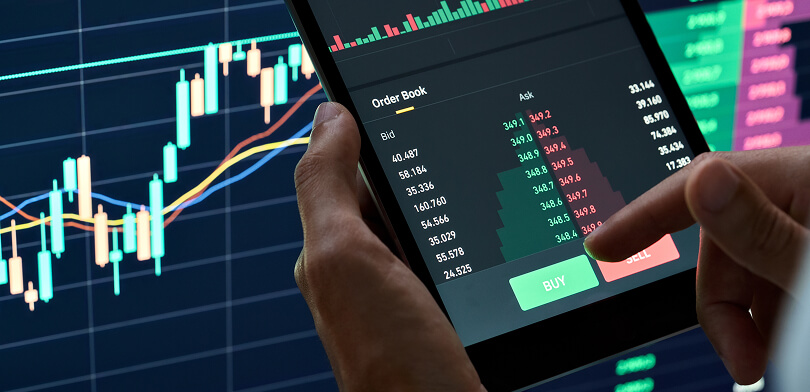Difference: Day Trading or Swing Trading – Which is Better?
Day Trading or Intraday Trading is very popular among traders globally but there is another trading technique they use to make their trading more money-making. Swing trading is among of them, that you can use as a trading or short-term trading.
However, few people are confused about these two types of trading strategies and don’t know which is more suitable for them. Here you need to understand the difference between day trading and swing trading so that you can choose the right trading strategy as per the market conditions and trading opportunities in the market for better returns.
Topics Covered :
- What is Day Trading?
- What is Swing Trading?
- Difference Between Day Trading and Swing Trading
- Definition
- Time Horizon
- The Leverage
- The Level of Risk
- Time Spend on Trading
- Requirement of Funds
- Tools & Techniques
- Trading Strategies
- CONCLUSION: Day Trading or Swing Trading – Which is Better?
What is Day Trading?
Day Trading, also better known as Intraday Trading, is the trading strategy in which traders do multiple transactions in a single day. This means you can buy or sell many times or in multiple securities but you have to close or square off all your open positions on the same day market close, if you do not do that your broker will automatically close your position.
The time horizon of day trading is one day, you can buy or sell any stock within the trading hours but you have to predefine that you are going to take delivery or it is intraday. If you bought shares you have to sell at the end of the market hours, either you gain profit or incur loss. And if you have placed a short-selling order, you have to buy the same company shares in the same quantity.
What is Swing Trading?
Swing trading is a delivery-based trading strategy that can last more than one day, maybe for many days, several weeks or months till you gain profit. For beginners swing trading is much easier, as you can easily find out the stock which has the potential to give you profits in coming trading sessions. In swing trading, you get enough time and multiple resources to analyse the stock, and based on the trend and potential you can decide which stock to buy or sell.
In swing trading you can perform both types of analysis – fundamental analysis and technical analysis, to make your trade decision well-informed and more strategic. Swing trading allows traders to hold their position for many days, till they earn lucrative amount of profits. It is less risky for new traders and provides ample opportunity to find suitable stocks and buy at the right levels with the expectation to move as per your expectations.
Recommended Read: Different types of Stock Trading
Difference Between Day Trading and Swing Trading
Definition
Day Trading is a one-day trading strategy to buy or sell stocks or any other underlying security and close the trade position on the same day. Rather than holding the stock for longer days, traders take advantage of intraday volatility and enter into the trade position with the motive to gain marginal profits in a day into multiple trades.
Swing Trading is a short-term trading style, in which you have to hold the trade position for several days or weeks. Swing trading allows to properly analysing the fundamentals and technical of the stock with adequate time to pick the right stock for trading. You can hold your position till you get the profit or exit on the same day if earn unexpected profit.
Time Horizon
Day Trading is a one-day game, you have to enter into your trade position and exit from the same on the same trading day. You can enter into multiple trade positions or buy or sell or do both in multiple stocks, but ultimately you have to close all your positions at the end of the day before the market closes. Hence, the time horizon for day trading is one day.
Swing Trading is not meant for one day game; instead, you have time for many days, weeks or months depending on your capability to hold your trade position. Though, in swing trading also if you get profits on same day you can close your position and exit. But it is not possible in every trade, and you also need more capital to trade in swing based trading.
The Leverage
In Day trading, you can enjoy much higher leverages by your broker. This is called the intraday margins that are offered multiple times of your funds. High leverage also provides a better opportunity to trade with small funds and the possibility to get high returns.
In Swing Trading, the margins or you can say leverage is offered much lower, up to two times your available capital. In swing trading, you need a huge amount of capital, as you have to buy the stocks for holding in your demat account, hence you have to pay the full amount of the trade value.
The Level of Risk
In Day trading you are bound to close your trade position on the same day. Suppose the market or stock price is not moved as per your expectations, and your trade position is running into loss, then you don’t have any other option except exiting into loss. However, traders use stop loss with a 1% strict rule for day trading to exit from the trade position limiting the risk of major losses.
The risk in Swing trading could be much higher as you hold your trade position for next day or several days. However, unlike day trading, in swing trading, risk can be absorbed if your trade position is running into a loss, you can wait for the next day or more days to recover from such losses.
Time Spend on Trading
In Day Trading you need to keep monitoring your trade positions and take actions as per the movement of the stock. Day trading strategies work on low margins, hence any significant move means you should book the profit or exit from your trade position. For that, you have to keep your eyes on your trading panel on your PC or on your smartphone App.
In Swing Trading you don’t need to spend much time and effort watching your trade positions. You can set alerts or can check the prices when there is a significant movement in the market or the individual stock price. In swing trading, you need less time and effort to make your trade profitable but need extra time in performing the analysis.
Requirement of Funds
In Day Trading you need less amount of capital to trade, as you can enjoy high margin facility from your broker to trade multiple times higher trade value than the capital you have in your account. Hence you can start day trading with a smaller amount of funds.
In Swing Trading, you need more amount of capital compared which makes it difficult for many traders to afford this type of trading strategy. In day trading, you can liquidate your funds on the same day, but in swing trading your cost of capital increases due to holding your trade position for many days. Hence, if you have funds for many days then you can choose to swing trading.
Tools & Techniques
In Day Trading, you can use technical analysis to find the best stock for intraday. You can use technical indicators and oscillators to analyse the stock trend buying and selling levels. You can choose the momentum stocks or choose to trade in news-based stocks or stocks that breakout or trend in the market to make hay while the sun shines.
In Swing Trading, you have sufficient time to analyse stock thoroughly, hence you can perform both fundamental analysis and technical analysis. You can analyse the stock fundamentally to find the intrinsic value of the stock and use technical analysis to analyse the buying or selling points and where you have to book the profits or exit from your trade position.
Trading Strategies
In Day Trading, traders usually follow the trading strategies that can work in the Intraday. For day trading you can follow popular trading strategies like scalping, momentum trading, trend-based trading, breakout trading, news-based trading, range trading and high-frequency trading. You can use the right strategy as per the market conditions.
In Swing Trading, traders mostly use trading strategies like trend-based trading, support and resistance, MACD Crossover and Fibonacci Retracement. For swing trading, you can also use candlestick chart patterns to identify the trend in the stock with a further indication of movement. You can also use technical indicators in swing trading.
CONCLUSION: Day Trading or Swing Trading – Which is Better?
Day Trading and Swing Trading both are popular trading techniques among traders across the globe. Both have their pros and cons making it sometimes difficult for traders to choose between both of them which one is better or suitable for them.
Choosing the right trading style suitable for you totally depends on your investment goals, trading strategies, level of knowledge or skills and experience to make the best use of them. If you can take quick decisions, have high-risk-taking ability, have low capital available and have enough time to keep monitoring your trade positions throughout the day, then day trading is suitable for you.
Conversely, if you need more time to analyse and make decisions for trading, have sufficient capital to invest and, have the patience to hold your trade position for long days but don’t have time to observe your trade positions, then swing trading is better for you. Hence, you can choose the right one as per your trading style and investment strategies.
Recommended Read: Different types of Equity Trading

















